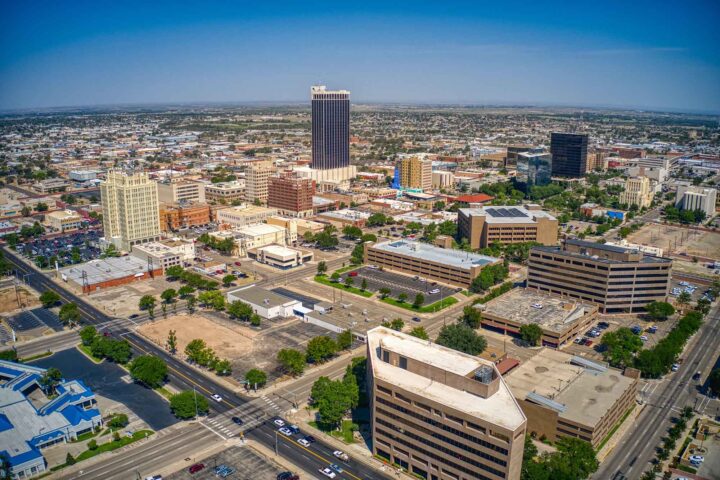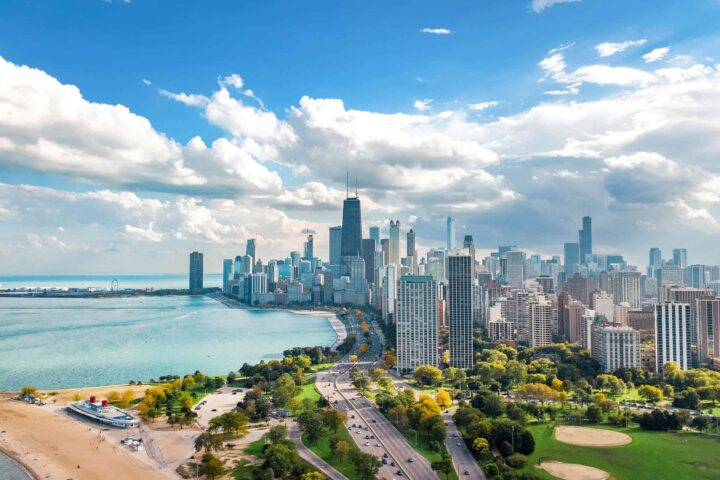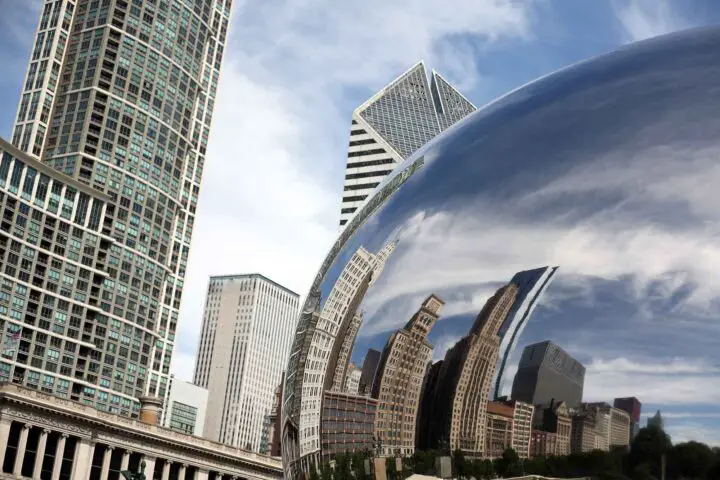Chicago is called “America’s Windy City.” It earned this nickname because of its windy winters. However, is Chicago the windiest city in America? To find out, we compiled data on the 10 windiest US cities. The results might surprise you.
This list considers a city as any location with more than 50,000 people and is based on the newest wind speed data available from official NOAA data.
Windiest US Cities
You might have thought Chicago would rank high on our list, but it didn’t even manage to crack the top 10 here. That’s not to say it isn’t windy in Chicago: with an average wind speed of 9.0 mph, it would have ranked in the top 20 windiest US cities. But it’s surprisingly far down the list, considering its name!
- Amarillo, Texas: Average wind speed of 12.9 mph
- Rochester, Minnesota: 12.1 mph
- Lubbock, Texas: 12 mph
- Casper, Wyoming: 12 mph
- Corpus Christi, Texas: 11.7 mph
- Wichita, Kansas: 11.5 mph
- Boston, Massachusetts: 11.5 mph
- Great Falls, Montana: 11.4 mph
- New York City, NY: 11.3 mph
- Oklahoma City, Oklahoma: 11.3 mph
Why is Texas So Windy?

Three of the top five windiest US cities are located in Texas. Winds in Amarillo typically blow from the north, and they are among the windiest during the winter. However, these winds don’t come from high-pressure systems or storm fronts but local topography. The wind tunnels through a gap between two mountain ranges on either side of Amarillo, making them faster.
The National Weather Service in Amarillo explains it this way: “As westerly winds flow over the Rocky Mountains, low pressure forms to the east of the mountains in the high plains. This persistent low pressure leads to the strong average wind speeds from the southwest and west.”
Lubbock sits on Llano Estacado, a region on the Western High Plains. A combination of its higher elevation and long stretches of flat land where wind can blow unimpeded there. Abilene sits east of these two Texas cities and experiences the same higher winds- although perhaps less intense- as Amarillo and Lubbock.
Why is Corpus Christi so windy since it sits on the Gulf Coast? A few things could explain this: the region sees frequent tropical activity during the summer, and other factors drive the winds at different times of the year. Proximity to Mexico’s desert is one factor, and extreme heat is another. Corpus’s proximity to the coast means it is typically cooler than surrounding areas, creating the temperature gradient that drives stronger winds.
Boston: The Northeast’s Windiest City
The Boston area is on our list of the windiest US cities because of its unique position in the Northeastern US, making it a frequent target for coastal storms and frontal passages from the west.
The windiest parts are on Cape Cod, where wind gusts can reach up to 60 miles per hour in storms. Like Corpus Christi, Boston also sits by the ocean and sees high winds thanks to temperature gradients between land and sea during cold winter when wind speeds typically pick up.
Boston’s windiest days also tend to occur in winter and spring, but the city sees its most blustery months from January through March, when coastal storms, known as nor’easters, are frequent.
Why is Chicago So Windy?

The Windy City’s windiness comes from its position near water and low elevation relative to the surrounding area, which creates a strong temperature gradient between land and air that drives wind speeds up in fall through spring. However, a change in wind pattern with increased wind speeds during winter can sometimes cause extreme wind conditions. Chicago’s windiest months are January and February, but it experiences its most severe wind storms from late fall through early spring.
How did Chicago get the nickname “The Windy City”?
We’ve had a few comments pointing out that Chicago’s nickname doesn’t necessarily have to do with its blustery weather. That is true: the nickname’s initial usage back in the mid-19th Century was thought to be due to its boisterous residents being “full of hot air,” or in the slang of the time, “windy.”
However, historians have found evidence of the nickname being used to describe the city’s windy weather at the same time. It is unclear whether Chicagoans initially used the nickname to describe the weather, which rival cities stole to take a jab at Chicago, or vice versa. Modern usage of the term “The Windy City” describes Chicago’s weather, though.
Experience the fascinating world of weather with the second edition of Weather Watch: An Introduction to America's Weather and Climate. This book doesn't just explain weather and climate concepts—it brings them to life.
Weather Watch is perfect for teenagers and adults who wish to deepen their understanding of the dynamic world of meteorology. Simplifying the complex, this book breaks down the science of weather into smaller, easily digestible concepts, allowing you to build on your knowledge with each chapter.
Here's what to expect:
- Detailed insights on clouds, pressure and wind, reading weather maps, hurricanes, and tropical storms
- Enlightening discussion on climate change
- Essential guidance on purchasing a weather station
- Critical information on severe weather and tornadoes
- Learning how to forecast the weather yourself
This second edition comes completely reformatted with over 30 pages of new content, including advanced weather map analysis and space weather. It's more visually appealing with additional illustrations and graphics. Each chapter now ends with handy links for more in-depth learning, and sprinkled throughout the book are captivating American weather events, serving as real-life illustrations of introduced concepts.





